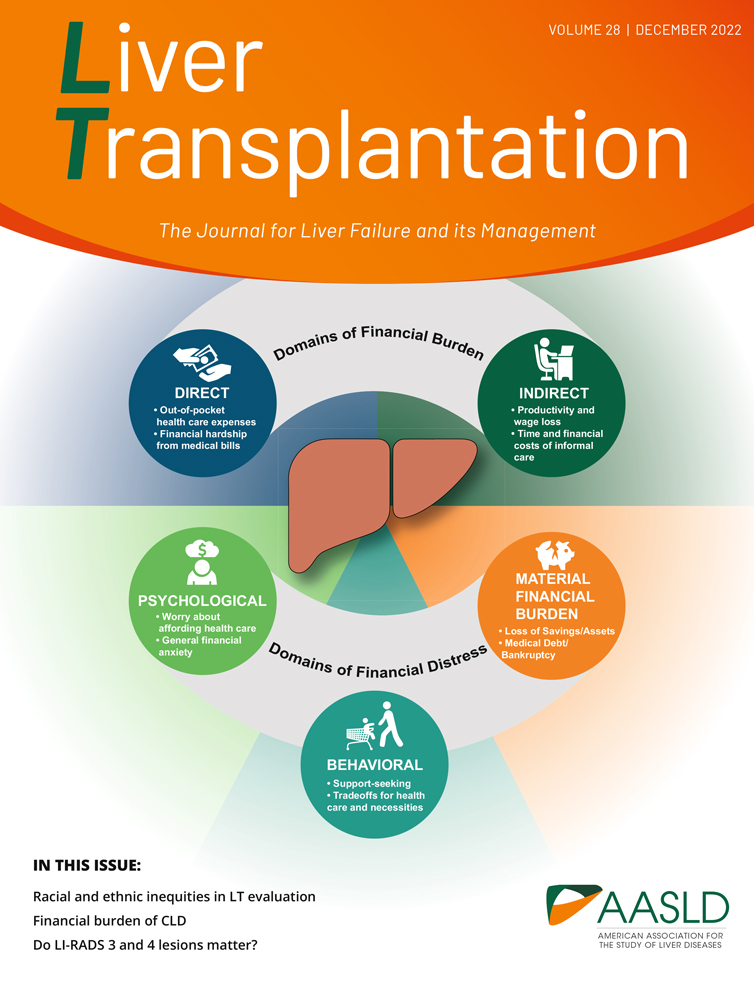Undetected hepatocellular carcinoma: Clinical features and outcome after liver transplantation
Abstract
The aim of the study was to define the clinical characteristics and outcome of patients found to have an undetected hepatocellular carcinoma (HCC) at liver transplantation. Patients who underwent liver transplantation and were found to have a hepatoma with a prior workup showing normal alpha-fetoprotein levels and no corresponding lesion on radiological evaluation were defined as having an undetected HCC. Detailed information was collected, and the last abdominal computed tomographic (CT) scan before transplantation was performed was retrospectively reviewed. Thirty-nine patients had a tumor that met the criteria for an undetected hepatoma. The most common causes for pretransplantation liver disease were hepatitis C virus (HCV) (49%) and alcohol use (28%). Tumor size was 2 cm or less in 85% of the patients, vascular invasion was detected in 31% of the patients, and tumor, node, metastasis (TNM) classification was stage I or II in 77% of the patients. Review of the last CT scan before transplantation showed that the lesion was evident in retrospect in only 15% of the patients. Thirty-two patients (82%) remained alive at the time of the study with a mean follow-up of 30 months. Metastatic HCC was detected in 1 patient 7 months after transplantation. There were no other tumor recurrences. Survival analysis showed no significant differences when tumor size, stage, presence of vascular invasion, or causes of pretransplantation liver disease were compared. Undetected HCCs represent a significant percentage of total hepatomas in patients undergoing liver transplantation. Most patients have small, early-stage tumors, but tumors greater than 2 cm or of advanced stage are also frequently found in this population. Overall and tumor-free survival appear to be favorable.




